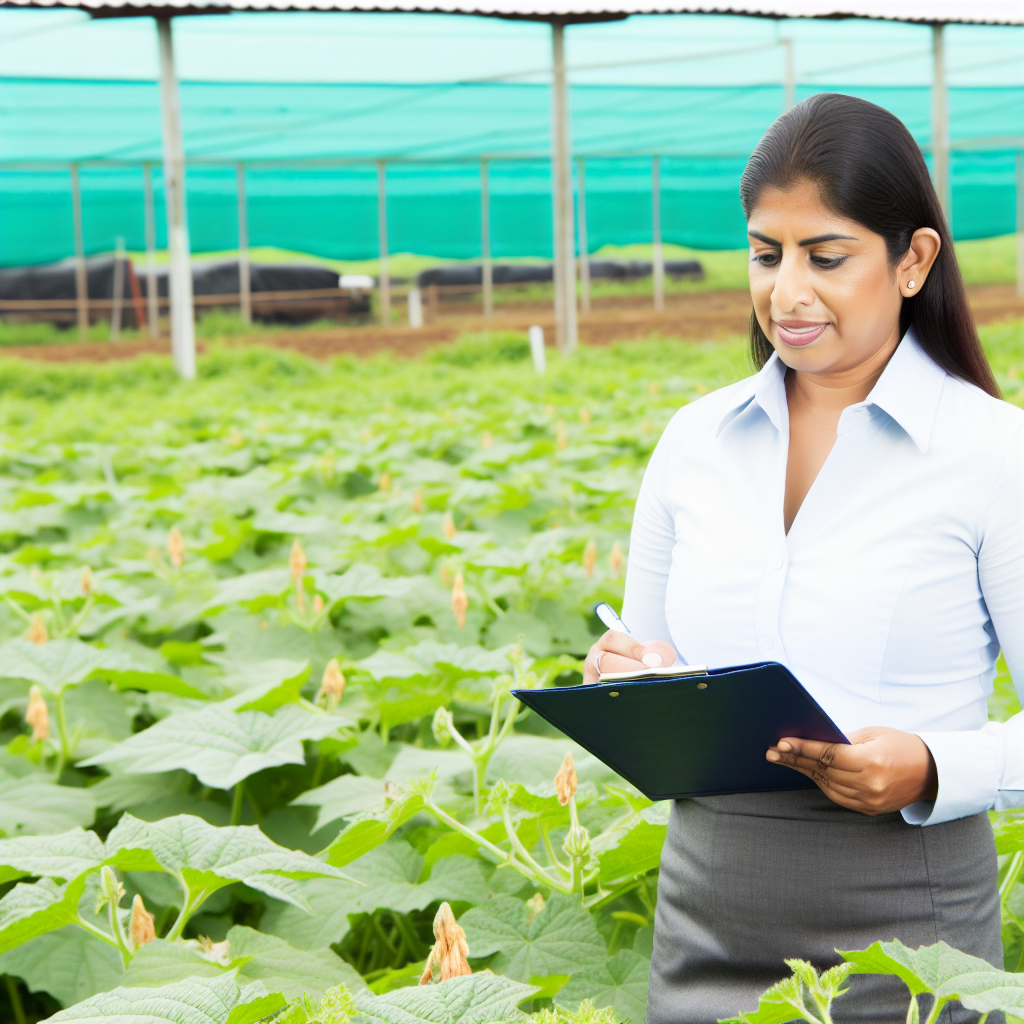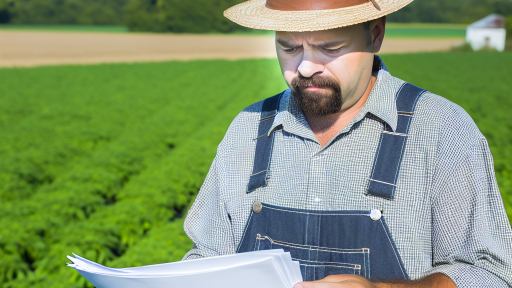Introduction to Food Safety Standards and Their Importance in Agriculture
Food safety standards play a crucial role in modern agriculture.
They ensure that food produced on farms is safe for consumption.
These standards help prevent foodborne illnesses and contamination.
Moreover, they foster consumer trust in agricultural products.
Understanding Food Safety Standards
Food safety standards are guidelines set by various regulatory bodies.
These regulations apply to all stages of food production.
From farm to table, each step must comply with specific safety protocols.
Farmers must understand these standards to maintain compliance.
The Impact of Food Safety on Farm Management
Implementing food safety standards affects farm management practices.
Farmers must adopt rigorous hygiene practices in their operations.
This includes proper handling and storage of produce.
In addition, they must train their staff on safety procedures.
Ultimately, these practices can enhance product quality.
Benefits of Compliance with Food Safety Standards
Compliance offers numerous benefits for farmers and consumers alike.
- It reduces the risk of foodborne illnesses.
- It can open new markets for farmers.
- It promotes sustainable farming practices.
Furthermore, compliance can improve a farm’s reputation.
Transform Your Agribusiness
Unlock your farm's potential with expert advice tailored to your needs. Get actionable steps that drive real results.
Get StartedConsumers appreciate farms that prioritize safety.
The Future of Food Safety Standards in Agriculture
As consumer demands evolve, food safety standards will also change.
New technologies and methods are emerging to enhance safety.
For instance, traceability systems can help track produce.
These systems allow quick responses to potential contamination issues.
Consequently, the role of technology in farm management grows increasingly vital.
Historical Development of Food Safety Standards in Farm Management
Early Regulations and Standards
The history of food safety standards begins in ancient civilizations.
For example, the Romans implemented basic sanitation laws.
These laws aimed to protect food from contamination.
In the Middle Ages, regulations focused on preventing spoiled food sales.
Municipalities created guidelines to manage public health risks.
The Industrial Revolution and Its Impact
The Industrial Revolution brought massive changes to food production.
Increased food production raised concerns about safety.
As a result, countries began developing formal safety regulations.
The U.S. established the Food and Drug Administration in 1906.
This agency aimed to oversee food safety and health standards.
Global Food Safety Initiatives
In the late 20th century, food safety became a global focus.
Countries started collaborating to set international standards.
The Codex Alimentarius Commission was formed to guide food safety.
This body developed guidelines used by countries worldwide.
Such collaboration aims to ensure food safety on a global scale.
Modern Developments in Food Safety Standards
Today’s food safety standards are comprehensive and complex.
They encompass everything from farm management to consumer protection.
Modern regulations emphasize Hazard Analysis and Critical Control Points (HACCP).
Showcase Your Farming Business
Publish your professional farming services profile on our blog for a one-time fee of $200 and reach a dedicated audience of farmers and agribusiness owners.
Publish Your ProfileThese systems help identify risks at every food production stage.
Furthermore, technology integrates into farm management for better monitoring.
The Role of Technology in Evolving Standards
Advancements in technology shape modern food safety standards.
For example, data analytics identify potential food safety risks.
Additionally, blockchain technology enhances transparency in the supply chain.
These innovations streamline compliance with safety regulations.
Consequently, farmers can manage risks more effectively.
Key Components of Food Safety Standards
HACCP (Hazard Analysis Critical Control Point)
HACCP is a systematic approach to food safety.
It identifies potential hazards in the production process.
Subsequently, it establishes critical control points to mitigate risks.
For instance, monitoring cooking temperatures is crucial.
Furthermore, tracing the source of ingredients enhances safety.
Companies like Green Valley Farms implement HACCP effectively.
Good Manufacturing Practices (GMP)
GMP outlines the conditions required for safe food production.
These practices ensure quality and safety in food handling.
For example, regular cleaning of equipment is essential.
Moreover, employee training reinforces food safety compliance.
Quality controls at facilities can prevent contamination issues.
Many organizations adhere to GMP guidelines to maintain standards.
Other Relevant Food Safety Standards
In addition to HACCP and GMP, several other standards exist.
ISO 22000 is focused on food safety management systems.
This standard integrates management practices for food safety.
Furthermore, BRC Global Standard emphasizes product safety and quality.
Companies that achieve certification demonstrate commitment to safety.
Adhering to these standards builds consumer trust in products.
Importance of Compliance
Compliance with food safety standards is crucial for producers.
It reduces the risk of foodborne illnesses among consumers.
Additionally, compliance can enhance marketability and brand reputation.
Proactive food safety measures protect both consumers and businesses.
Ultimately, it fosters a culture of safety and accountability in the industry.
You Might Also Like: Evaluating Alternatives To Traditional Pesticides
The Impact of Food Safety Standards on Crop Production Practices
Understanding Food Safety Standards
Food safety standards establish crucial guidelines for crop production.
These standards help ensure the safety and quality of agricultural products.
Farmers must adhere to these regulations to meet market demands.
Moreover, compliance builds consumer trust in food products.
Effects on Crop Management Techniques
Food safety standards influence various farming techniques.
For instance, they promote the use of safer pesticides and fertilizers.
Additionally, farmers adopt better irrigation methods to prevent contamination.
These practices significantly enhance crop quality and yield.
Training and Education Requirements
Adhering to food safety standards requires ongoing education and training.
Showcase Your Farming Business
Publish your professional farming services profile on our blog for a one-time fee of $200 and reach a dedicated audience of farmers and agribusiness owners.
Publish Your ProfileFarmers attend workshops to learn about best practices.
They also stay updated on the latest regulations and technologies.
Such training fosters a culture of food safety within farm management.
Impact on Supply Chain Management
Food safety standards shape supply chain protocols.
They necessitate traceability from farm to fork.
As a result, farms integrate better inventory management systems.
This integration ensures that all products align with safety regulations.
The Role of Technology in Compliance
Technology aids farmers in meeting safety standards effectively.
Data management systems track compliance documentation.
Additionally, precision agriculture tools minimize the risk of contamination.
These technologies streamline operations while enhancing safety measures.
See Related Content: The Role of Rural Development Policies in Enhancing Farm Sustainability
Role of Technology in Enhancing Food Safety Compliance on Farms
Introduction to Food Safety Technology
Technology plays a crucial role in food safety on farms.
It helps farmers meet compliance standards effectively.
Innovative solutions streamline safety protocols and improve monitoring.
Real-time Monitoring Systems
Real-time monitoring systems are becoming essential for food safety.
These systems allow farmers to track environmental conditions continuously.
For instance, humidity and temperature levels can be monitored in real-time.
As a result, farmers can react quickly to potential hazards.
Such proactive measures reduce contamination risks significantly.
Data Management Solutions
Data management solutions enhance record-keeping for compliance.
Farmers can digitize logs for pesticide usage and harvest dates.
Additionally, these systems can automate documentation processes.
This automation saves time and reduces human errors.
Consequently, auditors find it easier to verify compliance records.
Traceability Technologies
Traceability technologies ensure that food products can be tracked.
Barcoding and RFID systems enable tracking from farm to table.
This enables farmers to identify the source of contamination quickly.
Moreover, it fosters consumer trust in food safety practices.
Training and Evaluation Tools
Training tools equipped with technology improve staff compliance.
Online training programs offer easy access to food safety protocols.
These tools help reinforce the importance of safety standards.
Furthermore, evaluation tools can assess employee performance regularly.
Continuous evaluation helps in maintaining high safety standards.
Advanced Biotechnologies
Advanced biotechnologies enhance food safety measures on farms.
For example, genetic modifications can create pest-resistant crops.
This reduces the need for chemical pesticides.
In turn, it minimizes the risk of chemical residues in food products.
Impact of Technology on Food Safety Compliance
Technology significantly impacts food safety compliance.
Farmers can leverage these tools to ensure higher safety standards.
Showcase Your Farming Business
Publish your professional farming services profile on our blog for a one-time fee of $200 and reach a dedicated audience of farmers and agribusiness owners.
Publish Your ProfileAs food safety requirements evolve, technology will continue to play a vital role.
Gain More Insights: Adapting Farming Practices to Rural Development Policy Changes

Case Studies: Successful Implementation of Food Safety Standards in Farms
Introduction to Case Studies
This section explores successful cases of food safety standards in agriculture.
It highlights how these practices improve safety and farm management.
Farm A: Green Meadows Organic Farm
Green Meadows Organic Farm adopted robust food safety standards in 2020.
They implemented HACCP principles to safeguard against contamination.
As a result, they reduced incidents of foodborne illnesses significantly.
Training and Education
The farm prioritized training staff on food safety procedures.
Regular workshops kept everyone informed about the latest standards.
This commitment fostered a culture of safety and accountability.
Risk Assessment Techniques
Green Meadows conducted thorough risk assessments regularly.
They identified potential hazards in the planting and harvesting processes.
This proactive approach minimized risks effectively.
Farm B: Sunny Acres Produce
Sunny Acres Produce embraced international food safety standards.
The GlobalG.A.P. certification improved their market access.
Consumers valued their commitment to food safety practices.
Traceability Systems
Sunny Acres installed a traceability system for their products.
This system tracks produce from farm to table.
It enhances consumer trust and product transparency.
Partnerships with Local Health Departments
Sunny Acres collaborated with local health departments.
Regular inspections ensured compliance with safety regulations.
This partnership reinforced their credibility in the market.
Farm C: Hilltop Dairy Farms
Hilltop Dairy Farms implemented strict hygiene protocols in their operations.
These measures directly enhanced milk quality and safety.
They consistently passed health inspections with flying colors.
Regular Auditing Processes
The dairy farm conducts internal audits of their safety protocols.
These audits help identify areas for improvement.
Consequently, they maintain high standards of hygiene and safety.
Community Engagement Initiatives
Hilltop actively engages with the local community on food safety education.
They host farm tours to educate consumers about dairy production.
This transparency fosters community trust and loyalty.
Impact of Food Safety Standards on Agriculture
These case studies illustrate the positive impact of food safety standards.
They demonstrate enhanced product quality and consumer confidence.
Farmers can achieve substantial benefits through effective implementation.
Gain More Insights: Biodiversity Protection Laws for Farmers
Challenges Faced by Farmers in Adopting Food Safety Standards
Understanding Regulatory Complexity
Farmers encounter numerous regulations in food safety standards.
These regulations often vary by region and product type.
This complexity creates confusion among farmers.
Many farmers struggle to keep current with changing regulations.
Furthermore, compliance can require significant time and resources.
Showcase Your Farming Business
Publish your professional farming services profile on our blog for a one-time fee of $200 and reach a dedicated audience of farmers and agribusiness owners.
Publish Your ProfileFinancial Constraints
Adopting food safety standards can be costly for farmers.
Many small-scale farmers operate on tight budgets.
This limited funding affects their ability to invest in compliance.
Additionally, implementing new procedures may require hiring skilled staff.
Many farmers simply cannot afford this additional expense.
Lack of Knowledge and Training
Many farmers lack adequate training in food safety practices.
This knowledge gap hinders effective adoption of standards.
Some farmers may not fully understand the importance of compliance.
Workshop and training opportunities may be limited in some areas.
Consequently, the lack of accessible resources creates challenges.
Time Constraints
Farming requires intense time commitments throughout the year.
Farmers must juggle various tasks from planting to harvesting.
Compliance with food safety standards adds another layer of complexity.
Many farmers feel they lack sufficient time to implement these requirements.
This can lead to postponed or inadequate compliance efforts.
Resistance to Change
Farmers often rely on traditional methods handed down through generations.
Changing established practices can be met with resistance.
This reluctance may stem from fear of increased workload.
Some farmers may doubt the effectiveness of new standards.
Thus, fostering a culture of adaptability is essential.
Future Trends in Food Safety Standards and Their Implications for Farm Management
Innovative Technologies in Food Safety
Technology plays a crucial role in enhancing food safety standards.
Farmers increasingly adopt precision agriculture techniques.
These technologies allow for real-time monitoring of food safety parameters.
For instance, sensors can detect contaminants in soil and water.
This timely data helps farmers make informed decisions.
Moreover, blockchain technology improves traceability in the food supply chain.
Farmers can now track their products from farm to table seamlessly.
Regulatory Changes and Adaptations
Food safety regulations continue to evolve globally.
Farmers must stay informed about new compliance requirements.
Regulatory bodies emphasize preventive measures over reactive ones.
This shift requires farmers to implement rigorous safety protocols.
Training and education programs are crucial for adapting to these changes.
Furthermore, partnerships with industry experts can enhance compliance efforts.
Consumer Expectations and Market Trends
Consumers are more aware of food safety issues than ever before.
This awareness drives demand for higher safety standards.
Consequently, farmers must prioritize transparency in their operations.
They can achieve this by sharing safety practices with consumers.
Additionally, organic and sustainable farming practices are becoming popular.
Farmers adopting these practices may attract a larger customer base.
Impact on Farm Management Practices
Food safety standards are reshaping farm management practices.
Showcase Your Farming Business
Publish your professional farming services profile on our blog for a one-time fee of $200 and reach a dedicated audience of farmers and agribusiness owners.
Publish Your ProfileFarmers are investing in training programs for staff on safety protocols.
Implementing regular audits ensures compliance with safety standards.
Moreover, integrating food safety into overall farm planning is essential.
This integration promotes a culture of safety within farming operations.
Ultimately, these efforts enhance the overall productivity and profitability of farms.
Additional Resources
Food Safety Agencies & Partners | Food Safety and Inspection Service




